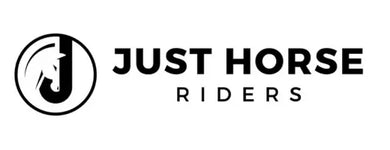Eastern Equine Encephalitis (EEE) in Quebec: Prevention and Management Strategies
Quebec, Canada, has recently recorded a significant surge in cases of Eastern Equine Encephalitis (EEE), a lethal mosquito-borne disease affecting horses. In just a few weeks, two cases in Lanaudière and Mirabel resulted in the euthanization of two unvaccinated horses due to the severity of their condition. This article analyzes crucial information about EEE, its impact, and preventive strategies.
Understanding Eastern Equine Encephalitis (EEE)
EEE is caused by the Eastern Equine Encephalitis virus, which is primarily harbored in wild birds. Mosquitoes feeding on these birds can transmit the virus to horses, humans, and other birds. Although horses do not transmit the virus to other animals or humans, the disease’s high mortality rate—approximately 90%—makes it a serious threat among mosquito-borne diseases in North America.
Clinical Signs and Symptoms
The clinical signs of EEE in horses are both non-specific and alarming, complicating early diagnosis. They include:
- Fever
- Severe depression
- Ataxia (loss of coordination)
- Impaired vision
- Circling or head pressing
- Muscle twitches
- Inability to swallow
- Paralysis
- Convulsions
In the recent Quebec cases, affected horses displayed severe fever, ataxia, and mental alterations, leading to rapid deterioration and subsequent euthanization.
The Importance of Vaccination
Vaccination remains the most effective preventive measure against EEE. The American Association of Equine Practitioners (AAEP) recommends annual vaccinations, ideally in the spring before mosquito season kicks off. For initial vaccinations, a booster is needed four to six weeks later, followed by annual revaccinations. In regions with persistent mosquito presence, administering vaccinations two to three times per year may be necessary.
Environmental and Preventive Measures
Beyond vaccination, several preventive measures can help minimize the risk of EEE infections:
1. Avoid Mosquito Bites
Using insect repellents is critical, especially from dusk to dawn when mosquito activity is high. Choose EPA-approved products containing DEET, picaridin, or oil of lemon eucalyptus for maximum effectiveness.
2. Home and Stable Mosquito Proofing
Ensure that window and door screens are intact to prevent mosquito entry, and eliminate any sources of standing water around homes and stables to reduce mosquito breeding habitats.
3. Environmental Control
Regularly drain water troughs and empty buckets. Using mosquito-eating fish in water tanks or applying mosquito dunks can also effectively control mosquito populations.
4. Housing Horses
Keep horses indoors during peak mosquito exposure hours—from dusk to dawn—to minimize their exposure to mosquitoes.
Role of Disease Surveillance
The Equine Disease Communication Center (EDCC) plays an essential role in monitoring and reporting diseases like EEE. This nonprofit organization provides open access to infectious disease data, helping horse owners and health professionals stay informed and take proactive measures to safeguard equine populations.
Broader Implications and Areas for Further Research
The recent EEE cases in Quebec underscore the necessity of comprehensive strategies to manage and prevent equine infectious diseases. Here are some key areas for further research:
Mosquito-Borne Diseases in Horses
Understanding the transmission dynamics and management of mosquito-borne diseases can help develop more effective preventive strategies.
Vaccination Protocols
Continuous research into vaccination protocols can ensure the implementation of the most efficient and effective schedules.
Equine Welfare
Studying the social and economic impacts of EEE outbreaks can lead to the development of support systems for affected horse owners and improve overall equine welfare.
Environmental Impact
Analyzing how climate and environmental changes affect the spread of mosquito-borne diseases can inform long-term prevention strategies.
Disease Surveillance Programs
Evaluating the effectiveness of disease surveillance programs like the EDCC can enhance disease reporting and response mechanisms.
Conclusion
The recent EEE outbreaks in Quebec highlight the vital importance of proactive health measures in the equine industry. By emphasizing vaccination, implementing preventive measures, and leveraging disease surveillance programs, horse owners and health professionals can significantly reduce the risk of EEE and other equine infectious diseases. As our climate continues to change and mosquito populations evolve, staying vigilant and well-informed is paramount to protecting the health and welfare of equine populations.
For more detailed information, visit the original articles at TheHorse.com.
References and articles based on:

